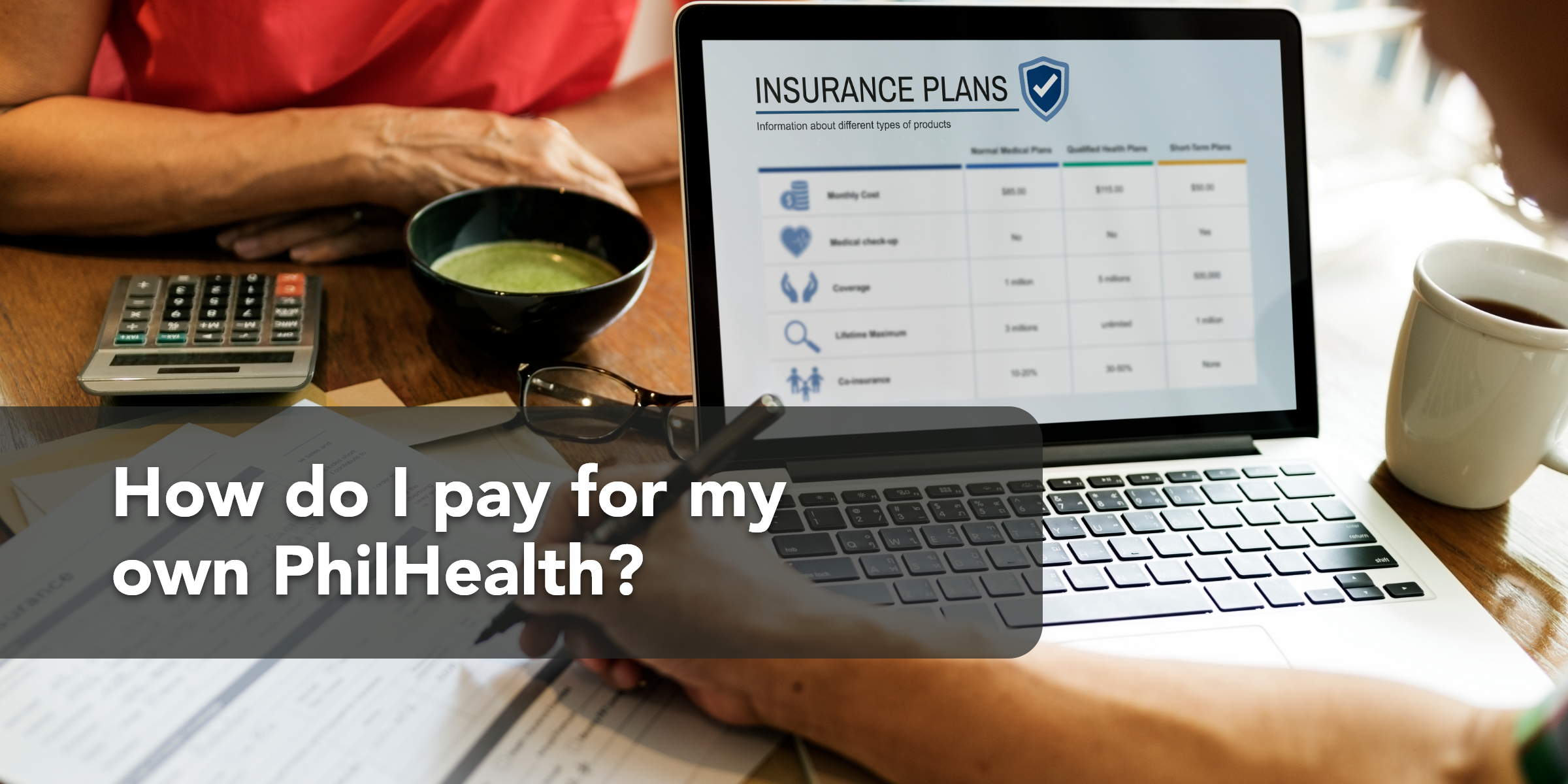Hospital bills and other healthcare costs are undoubtedly some of the biggest and often most unexpected expenses that affect everyone, but especially freelancers and online sellers. As a solopreneur, you’ve most likely invested quite a lot (if not all you have) into your business, which means if you get seriously sick or have an accident, that could mean serious trouble.
In this second of three articles that show you how you can help safeguard yourself as a solopreneur against life’s uncertainties, we’ll show you how you can register and pay contributions to the Philippine Health Insurance Corporation or PhilHealth on your own.
How do I register for voluntary contributions?
If being a freelancer or online seller is your first job, ever, start by applying for PhilHealth membership. You’re going to need:
- Two valid IDs or PSA Birth Certificate
- Two copies of the PhilHealth Member Registration Form (PMRF) (Get it, here.)
- Two 1×1 passport-sized photos
Once you have everything you need to apply, follow these steps:
- Visit your nearest Local Health Insurance Office or PhilHealth branch.
- If you haven’t filled out a PMRF yet, you can get copies at the branch you’re visiting.
- Submit your filled-in forms along with your IDs and photos.
- Wait for the staff to release your PhilHealth Member Data Record (MDR) and ID.
Now, if you’ve worked for a company or some other employer before that paid your PhilHealth contributions for you, you’re going to have to update your membership by following these steps:
- Get a PMRF and put a checkmark (✓) into the box next to Updating/Amendment. You’ll find that box in the upper right corner.
- Under Member Type, look for Self-Earning Individual and put a checkmark (✓) into the box next to that. You’ll also want to mark the boxes next to Individual or Sole Proprietor.
- Submit your filled-in PMRF to the nearest PhilHealth branch.
- Wait for the printed copy or email of your updated PhilHealth Member Data Record (MDR).
How do I know how much to pay?
Your monthly premium or contribution is 3.5% of how much you make per month or the amount you filled in on your PMRF.
So if you told PhilHealth on your PMRF that you make ₱35,000 a month, you’ll be paying ₱1,225 a month (that’s ₱ 35,000 x 0.035).
The current income floor and income ceiling for voluntary members like solopreneurs are also fixed at ₱10,000 and ₱70,000, respectively. That means that if you make ₱10,000 or less every month, your premium is fixed at ₱350, and if you make ₱70,000 or more monthly, you’ll be paying ₱2,450. So the schedule or table of contributions every month is:
- If you make ₱10,000 or less per month, your monthly contribution is ₱350
- If you make ₱10,001.01 to ₱69,999.99 per month, your monthly contribution is ₱350 to ₱2,449.99
- If you make ₱70,000 or more per month, your monthly contribution is ₱2,450
This income ceiling is going to increase by ₱10,000 every year until it reaches ₱100,000 in 2024 or 2025.
To make sure they calculate your premiums correctly, PhilHealth might ask you to submit an affidavit of income declaration or your latest income tax return. Otherwise, they’ll just use the highest computed rate.
Take note: PhilHealth was supposed to have changed their premium rate, or how much you have to pay, early in 2021—they’re waiting on Congress to make a decision, so in the meantime, it’s a good idea to keep an eye on the news for announcements about PhilHealth contributions.
Where do I pay my contributions?
Before you go to pay, make sure you have your PhilHealth Identification Number or PIN, and your Statement of Premium Account or SPA which serves as your billing statement.
You can get your SPA from the PhilHealth Member Portal (if you don’t have an account yet, you can create one, here). Now, if you were wondering whether you’ll need a PhilHealth ID to pay your contributions, you won’t—but it’s a good idea to get one and bring it along just in case the cashier asks you for it.
Ready with your PIN and SPA? Then you can head for one of the PhilHealth-accredited collecting agents:
- PhilHealth Regional Offices or Local Health Insurance Offices. When you get there, ask for a PhilHealth Premium Payment Slip. You can save time by downloading, printing and filling it out before you go. You can get a copy of it, here.
Take note: You can’t pay at a PhilHealth Express in a mall—they don’t accept contributions. But if there’s an accredited agent at the same mall, you can pay there.
- Over-the-counter collecting partners. If you choose to pay at one of these, ask for a payment, deposit or transaction slip for PhilHealth contributions. The partners you can pay at include:
- Asia United Bank
- Bank of Commerce
- Bank One Savings & Trust Corporation
- Bayad Center outlets and accredited agents
- Camalig Bank
- Century Rural Bank
- Century Savings Bank
- China Bank
- China Bank Savings
- Citystate Savings Bank
- Development Bank of the Philippines (DBP)
- EastWest Rural Bank
- LANDBANK
- Select local government units
- Maybank
- Money Mall Rural Bank
- One Network Bank
- Overseas Filipino Bank
- Penbank
- Philippine Business Bank
- Philippine Veterans Bank
- RCBC Savings Bank
- RCBC
- Robinsons Bank
- Rural Bank of Bambang
- Rural Bank of Jose Panganiban
- Rural Bank of Sta. Catalina
- Saviour Rural Bank
- SM Business Centers and bills payment counters in SM Supermarket, SM Hypermarket, and Savemore
- UCPB
- UCPB Savings Bank
- UnionBank
If you pay at a PhilHealth office, your contribution will be posted or credited to your PhilHealth account in real-time. If you pay at a collecting partner, it takes one or two days for your payment to be posted. Make sure you hang on to your validated payment slip because that’s your proof that you paid your contribution.
Can I pay for my PhilHealth contributions online?
Yes, online sellers and freelancers like you can pay online using the PhilHealth Member Portal, but to do this, you’ll have to make sure your Member Information is updated and complete. If you haven’t declared your monthly income, go to the nearest PhilHealth office to submit tax documents and have your declared monthly income updated.
You’re also going need GCash or a credit or debit card to pay within the Portal. That means if something goes wrong with your payment, you’ll be getting in touch with GCash or your debit or credit card company, and not PhilHealth.
Take note: If you don’t have updated Member Information with your monthly income, you will not be able to pay online.
To use the portal, follow these steps:
- Go to the PhilHealth Member Portal and click Online Services.
- Under Member Portal, click Register/Login. You’ll need a PhilHealth Online account to access the payment service. Click Create Account to register (make sure you have your PhilHealth number on hand), or proceed to logging in if you already have an account.
- Click Payment Management and choose Generate SPA which serves as your billing statement.
- Under Premium Payment Option, select the number of months that you’ll be paying for. You can pay for a minimum of 1 month to a maximum of 36 months (3 years) in advance.
- Wait for the Member Portal to automatically compute the amount to be paid. The amount is computed based on your monthly income, which is why you can’t pay online without it.
- Select Generate Statement of Premium Account (SPA).
- Choose MYEG Philippines as the Accredited Collecting Agent. (This is the only collecting agent you can choose from right now, but they’re working on adding other options like PayMaya.) Follow the instructions and click Proceed.
- You may now pay for your PhilHealth contribution through GCash or debit/credit card.
- You will receive a confirmation message upon completing the transaction. To view your official receipt or your Electronic Acknowledgment Receipt (ePAR), click ‘View SPA History’ under the ‘Payment Management’ module. It’s a good idea to save this receipt for your records, which will also be sent to your email or to your phone in a text message.
Take note: There is a 2.5% service charge for GCash and 3% service charge for debit/credit card on top of the ₱25 convenience fee.
When is the deadline for PhilHealth payments?
You never know when you’ll have to be hospitalized, so it’s always a good idea to pay for your Philhealth contributions regularly and on time. You can pay your premiums monthly, quarterly, semi-annually, or annually. The deadlines are:
- Monthly: Last working day of the applicable month (If you’re paying for July, your deadline is January 31.)
- Quarterly: Last working day of the applicable quarter (If you’re paying for July to September, your deadline is September 30.)
- Semi-annually: Last working day of the first quarter of the applicable semester (If you’re paying for July to December, your deadline is September 30.)
- Annually: Last working day of the first quarter of the year (If you’re paying for January to December 2019, your deadline is March 31, 2019.)
If you miss a deadline, PhilHealth allows retroactive contributions or payments for missed premiums—but only if you:
- Paid nine consecutive contributions before the missed deadline
- Pay within one month of the months that you missed
For example, if you missed payments for July to September, you can make up for those payments within October, only if you’ve paid consistently from October of the previous year until June.
So if you were able to make up for your missed contributions before the first day of a hospital confinement, it will be counted as part of your qualifying contributions which you need to be able to get PhilHealth hospitalization benefits. Qualifying contributions are three monthly contributions within six months before the first day of confinement.
Let’s say you missed payments from July to September, but you were able to make up for them in October. That means if you get hospitalized in November, you can benefit from PhilHealth coverage. However, if you paid during or after your hospitalization, that payment won’t count, and you won’t be able to benefit.
Take note: You’ll still have PhilHealth coverage if you need it, even if you weren’t able to make up for missed payments, but you’ll be billed for unpaid premiums with compounded monthly interest.
It’s a good idea to pay for contributions in advance to make sure your PhilHealth coverage isn’t interrupted. If you do pay in advance, make sure that you’re paying for the correct months or period of time, to make sure your payment record with PhilHealth is correct.
How long do I have to keep paying PhilHealth contributions?
You only get PhilHealth benefits if you’re an active member, which means paying qualifying contributions, but you’ll become a lifetime member as soon as you reach the retirement age of 60, and you’ve paid at least 120 monthly contributions. You won’t have to pay premiums anymore once you’re a lifetime member.
However, there are Senior Citizen members who are over 60 years old who may choose to keep paying PhilHealth contributions if they’re still employed or have a regular income. You can find out more about being a Senior Citizen member, here.
Do you need help with paying for your PhilHealth contributions? Ask an accountant from one of our Partner Firms, today.
References:
https://www.moneymax.ph/government-services/articles/voluntary-contribution
https://filipiknow.net/how-to-pay-philhealth-contribution/
https://www.moneymax.ph/government-services/articles/philhealth-benefits#How_to_Apply_for_PhilHealth_Membership
https://filipiknow.net/philhealth-contribution/






